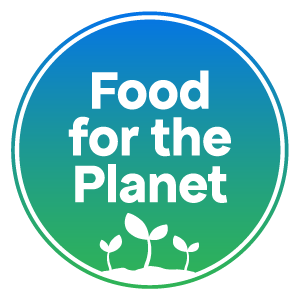Where possible, estimates of the likely GHG reductions from taking action are given, as well as the co-benefits for public health and wellbeing, restoring nature and biodiversity, planning for sustainable communities and economic development.
How the toolkit works
This toolkit allows you to explore simple food-related actions that can help tackle the climate and nature emergency.
For many of the actions, we have been able to calculate estimated GHG emissions savings. All figures are in carbon dioxide equivalent per year, and a link to the sources for each calculation is provided.
You can use this toolkit to record the actions of your local council, count up emissions savings, get recognition for taking action, and inspire others to follow suit. You can do so if you are a representative of a Local Authority, or if you are a local food partnership or community group you can record the actions of your local council. To do so, register here to create your own personalised dashboard.
We would love to hear from you if you are taking actions that we haven’t listed here – we may be able to add them. We’d also love to receive good examples of policies and case studies, so please email info@foodfortheplanet.org.uk
Get started now
1) Policy, Strategy and Partnership
Declare a Climate and Nature Emergency
A list of places that have declared a climate and nature emergency, with links to their declarations, is on the climateemergency.uk website. It is important to recognise the twin emergencies of climate change and nature/ecology. If your declaration itself doesn’t reference both, this should be part of your plans to address the emergency
Sign the Glasgow Food and Climate Declaration ahead of COP26 in November 2021
More information and a list of declaration signatories is here.
Publish an action plan for tackling the climate and nature emergency
The action plan should include specific actions to reduce emissions arising from the food and farming footprint of your village, town, city or county, including:
- Improving the sustainability of the diets of citizens
- Increasing agro-ecological food production and distribution.
- Reducing waste across the food waste hierarchy
- Committing to the creation of an equitable food system that tackles inequality, and supporting sustainable food businesses
The strategy should be co-designed with residents, community groups and practitioners and be publicly available. There are a number of excellent examples of council action plans in the ‘Local Policy’ sections of the Sustainable Food Places resources pages.
You may find policies and references within other council strategies relevant to food and climate change – there is a lot of overlap between this issue and other council priorities. For example, procurement, waste, economic development, biodiversity and nature, poverty, mental and physical health and wellbeing and planning.
Establish a Local Food Partnership to help drive action on food, climate and nature
More information about Local Food Partnerships is available on the Sustainable Food Places website. There may be a partnership already in your area, or one that you can support to become more established. Your area should aim to achieve bronze, silver, then gold Sustainable Food Places awards to recognise that you are leading in creating a fairer and more sustainable food system and are tackling food injustice and health inequality.
Nominate a staff member to lead on food and climate change
The staff member could sit within your climate change or public health team.
2) Land Use, Farming and Planning
Quick Wins
Publish and maintain a map of council landholdings
Highlight land that could be suitable for food growing, with the aim of providing equitable opportunities for using this land to grow food.
Brighton & Hove’s online asset register and Bristol’s Open Data platform are great examples of land holding maps, showing land and property usage. You should consider council-owned land, but also other space from housing associations, faith groups, educational establishments and even businesses. It’s also a good idea to gather and monitor local interest accessing land, for example through a land seekers survey, and to publicly list land available not just from the council, but housing associations, faith groups and so on.
If it isn’t possible to make a map public, it should be clear who to contact to find information about your asset registry and how to register an interest in growing food on available land.
Provide training and support for agroecological farming
Training could include:
- Advisory support on soil health, integrated pest management, farming organically, nature recovery and waste and reducing greenhouse gas emissions
- Business development support for enterprises wishing to bid for public contracts
- Signposting and /or encouraging groups to take part in training run by other organisations
- Providing training to council staff involved in land management, eg park staff
The Nature Friendly Farmers Network have a wealth of resources on climate-friendly farming and may be able to support you with training.
Use planning policy to protect food growing
Food growing spaces include allotments, smallholdings, community food growing, food hubs, small farms, composting facilities and similar infrastructure. Planning policy should also designate space for food selling and markets.
Spaces and infrastructure can be prioritised and protected as part of the council’s Local Development Framework (in England) and Local Development Plan (Northern Ireland, Scotland and Wales). New guidance on the National Planning Policy Framework released in July 2021 emphasises how planning policy can support a good food system, saying the design codes provide a framework for creating “healthy, environmentally responsive and sustainable places, with a consistent and high-quality standard of design”. Your planning policy should ensure that any new developments have space to grow food, which may be in the form of private gardens, communal spaces on estates or allotments, for example.
Brighton and Hove Allotment Federation have estimated the financial and ecological value to councils from allotments.
Where spaces are under threat, it is possible for them to be designated ‘assets of community value’, which allows communities and local authorities the right to bid for their ownership.
Bigger-ticket actions
Join Planning for the Planet
Good planning policy can support sustainable local farming, food growing and retail, with many benefits for the planet and local economy. At the same time, the number and intensity of applications for industrialised, polluting livestock agriculture is increasing in the UK. Local planning policy must be effective in encouraging a sustainable local food economy, and addressing the risks posed by intensive livestock, including river pollution, for which livestock farming is a leading cause.
When you join, you will be asked to confirm that you commit to adopting planning policy that is appropriate for your area through your local plan, or additional planning policies or guidance, to deliver on your climate and nature recovery goals.
You will join a network of places committed to creating great planning policy and have access to expertise and resources to help.
Increase the amount of land used for community food growing
Save 34 tonnes per hectare used for community food growing, per year
Community food growing spaces include allotments, growing spaces in schools, and spaces open to the public in estates, communal gardens and shared gardens. You could increase space available by making space available in golf courses, bowling greens, verges or vacant land. Check out the map from Community Farms and Gardens and London-specific Capital Growth growing spaces map. The National Allotment Society have a wealth of resources for allotment users, community groups and Councils. Brighton and Hove Allotment Federation have estimated the financial and ecological value to councils from allotments.
BIODIVERSITY AND NATURE: Growing spaces are an opportunity to improve biodiversity and create nature-rich habitats locally.
In England, Local Nature Recovery Strategies, a flagship measure in the Environment Bill will require Local Authorities to measure and implement a specific strategy for improving habitats for nature on a landscape scale. In Scotland, the Scottish Biodiversity Strategy and Local Biodiversity Action Plans, as well as the Pollinator Strategy for Scotland can all be furthered by expanding nature-friendly food growing
Growing spaces can and should provide significant opportunities for increasing biodiversity
Are you growing food in London? Join Sustain’s Growing for Change campaign and pledge your garden to become a more climate and nature-friendly food garden. Plus take advantage of our useful resources. You can record the new growing spaces you develop in this toolkit to show your impact on GHG emissions
Join and take action Already registered? Sign in
This estimate for GHGs saved by creating a community food growing site is from a life-cycle analysis in Sutton, south London. 34kg is saved per year, per hectare compared to the same amount of food that would have been bought through mainstream retail channels.
Increase the amount of land used for local food growing and production
Save 4.8 tonnes per hectare of farmland switched from conventional to agro-ecological farming, per year
Releasing land for growing food offers a host of benefits for local food security, reduces the impact of food consumption in your area, and creates year-round outdoor jobs.
We encourage councils to look particularly at land in the urban fringes. Agroecological farming close to urban populations can offer particular benefits for nature, jobs and health. See Sustain’s Peri Urban Farming project for more.
Agroecology is a model of farming aiming to bring about a fairer and more sustainable food system. It has two components:
- Farming with lower environmental impact with the potential to sequester carbon and in a way that promotes biodiversity, using species well suited to the environment.
- Shifting control over land and resources towards communities, supporting smallerscale enterprises and creating a fairer farming system which is better for farming communities.
The most well-recognised model for agroecology is organic farming. Agroecology has been recognised as a model that can meet the challenges posed by the climate and nature emergency in both the UK Agriculture Act 2020 and National Food Strategy 2021.
BIODIVERSITY AND NATURE: Farmland covers nearly 70% of the UK and is a very important opportunity to improve biodiversity, create nature-rich habitats, and reverse the decline of wildlife in the UK. In England, Local Nature Recovery Strategies, a flagship measure in the Environment Bill, means Local Authorities will be required to measure and implement a special strategy for improving habitats for nature on a landscape scale. In Scotland, the Scottish Biodiversity Strategy and Local Biodiversity Action Plans, as well as the Pollinator Strategy for Scotland can all be furthered by focussing on nature-friendly farming. Agroecological farming should be seen as an opportunity to deliver nature and biodiversity benefits in these strategies.
LOCAL ECONOMY - Every £1 spent buying organic food from local, sustainable farm Growing Communities has been demonstrated to generate £3.70 in benefits to customers, farmers, citizens and the planet.
Join and take action Already registered? Sign in
This calculation includes the emissions ‘saved’ by not treating, mowing and managing grass, plus the emissions saved by producing food locally rather than importing. The growing system and packaging are assumed to be the same – ie both estimates are for conventional farming techniques, not agro-ecological farming.
Mixed mown and rough grass such as that on golf courses is actually a GHG emitter, responsible for 1.2 tonnes CO2e per hectare per year, (at a low estimate.)
To calculate transport emissions, a low-moderate estimate of 200g CO2 e per kg produce (200kg per tonne) was used, roughly the expected emissions for importing produce from Spain (a major source of green vegetables, tomatoes, peppers, other salad crops). The yield was assumed to be 18 tonnes per hectare.
Emissions reduction per hectare therefore = 1.2 + (0.2 x 18) = 4.8T CO2 per hectare
Both calculations above should be considered a rough guide. The estimated GHG reduction potential for local community and commercial food growing depends on a number of factors, particularly the crop grown.
Transition farms in your area to agroecology
Save 43 tonnes per hectares switched to agroecological farming, per year
We recommend starting with county farms and land owned by the council and other anchor institutions like universities, and requiring a transition to agroecological management when tenancy agreements come up for renewal. Whole farm agroecological systems can also be made part of the business plan requirements for farm tenancies.
Agroecology is a model of farming which aims to bring about a fairer and more sustainable food system and the benefits are far broader than mitigating climate change. It has two components:
- Farming with lower environmental impact with the potential to sequester carbon and in a way that promotes biodiversity, using species well suited to the environment.
- Shifting control over land and resources towards communities, supporting smallerscale enterprises and creating a fairer farming system which is better for farming communities.
The most well-recognised model for agroecology is organic farming.
Agroecology has been recognised as a model that can meet the challenges posed by the climate and nature emergency in both the UK Agriculture Act 2020 and National Food Strategy 2021.
BIODIVERSITY AND NATURE benefits – farmland covers nearly 70% of the UK and is a very important opportunity to improve biodiversity and create nature-rich habitats. In England, Local Nature Recovery Strategies, a flagship measure in the Environment Bill, means Local Authorities will need to measure and implement a special strategy for improving habitats for nature on a landscape scale. In Scotland, the Scottish Biodiversity Strategy and Local Biodiversity Action Plans, as well as the Pollinator Strategy for Scotland can all be furthered by focussing on nature-friendly farming
Go ‘Pesticide Free’ for your council land, verges and parks
Save 25.5 tonnes per tonne less pesticides used, per year
As part of this, invest in education and training for grounds maintenance workers in ecological land management practices.
For English councils - see the Pesticide Action Network’s Pesticide Free Town campaign for resources and advice, and to record your pesticide free status.
Join and take action Already registered? Sign in
Audsley et al (2009) Give an estimation of GHG emissions from agricultural pesticide manufacture and use
In a 2016 survey, council respondents said they used an average of 177kg pesticides per year so an ‘average’ council might save 4500kg CO2 by going pesticide-free.
Create a planning designation for assets of value to farming, producing, transporting and selling sustainable food
A specific designation, for example ‘land of food systems value’, can prevent valuable food assets for a low-carbon food system being undermined or marginalised by other land-use decisions.
Your local design codes should protect and encourage good local food growing, production and retail.
Ensure sustainable and healthy food is grown and accessible locally as part of ‘20 minute neighbourhood’ designs.
Nottingham’s Wellbeing Design Guide is a helpful planning tool that prioritises health and wellbeing in planning decisions.
3) Food Use, Waste and Resource Efficiency
Quick Wins
Publish a council-wide food use strategy to minimise food waste according to the food waste hierarchy
This food use strategy could be part of the climate change strategy already mentioned above – you don’t need a separate one.
London Borough of Lambeth Municipal Waste Management Strategy 2011 – 2031 is a great example - it aims to reduce food waste through campaigns, linking with food growing projects to encourage community composting and subsidising home composting.
The Welsh Government have set Statutory Recycling Targets requiring that 70% of municipal waste be recycled by 2024/25. As such Wales’ recycling rates - including food - are world-leading.
Subsidise the cost of compost bins, water butts and kitchen caddies
Save 82kg per compost bin, per year
Composting on-site can lower waste costs and provide a regular source of free compost for your grounds/growing sites.
Join and take action Already registered? Sign in
According to WRAP, each home compost bin saves an estimated 150kg (0.15T) waste from landfill per year
Each tonne of food and drink waste diverted from landfill to composting or anaerobic digestion could reduce carbon emissions by 0.4-0.7 tonnes CO2 e. Taking a middle estimate, each bin saves 0.15 x 0.55T CO2 per year
Run food waste awareness-raising and reduction campaigns and events
Save 4.00kg per kg of food waste reduced through the campaign, per year
Campaigns should concentrate on reducing waste higher up the food waste hierarchy, and be aimed at residents, businesses, schools and other settings.
See the Love Food Hate Waste campaign, Disco Soup, No Loaf Lost, Your Business is Food and Guardians of Grub for inspiration.
- WRAP has numerous operational and campaign resources for hospitality and food service outlets.
- Redistribute surplus food, e.g. via Too Good To Go or OLIO.
- Consider catering food waste composters such as The Rocket.
Join and take action Already registered? Sign in
Preventing one kg of food waste saves 4kg CO2, according to Defra figures
Support community composting
Save 860kg per average-sized community composting site, per year
Support should include:
- Providing equipment and facilities for community groups to set up composting spaces
- Signposting residents to local facilities via your website.
You could start with composting spaces in allotments and community growing spaces
There are some great examples of support for community composting in Suffolk and Norfolk, and a video and accompaying blog, from Brighton
Join and take action Already registered? Sign in
A 2010 study from the Open University found that an average community Composting scheme processes around 10 tonnes waste per year.
21,500 tonnes were composted by community schemes in 2006 in total, saving approximately 1,850t CO2 equivalent compared to landfill, which is 86kg per tonne.
Bigger-ticket actions
Provide a food waste collection service for households, schools and businesses
Save 550kg per tonne of food waste diverted from landfill to composting, per year
The waste collected should be redirected from landfill to decentralised, local composting, energy recovery or animal feed.
All local authorities in the UK will be required to collect food waste from households by 2023. In Wales, 99% of households now have a food waste collection service after the Welsh Government introduced specific targets and funding to Local Authorities. The Welsh Government website has more information about how the nation became a world leader in recycling.
Join and take action Already registered? Sign in
Each tonne of food waste diverted from landfill to composting or anaerobic digestion could reduce carbon emissions by 0.4-0.7 tonnes CO2 e. A middle estimate was used here.
Reduce food waste in council-controlled settings through better purchasing, portion control and presentation
Save 4.00kg per kg food waste reduced, per year
Council-controlled settings include schools, care services, museums, council offices, civic centres and sometimes leisure centres and other municipal buildings.
See the Love Food Hate Waste campaign, Disco Soup, No Loaf Lost, Your Business is Food and Guardians of Grub for inspiration.
Join and take action Already registered? Sign in
Each tonne of food waste is associated with an estimated 2.63 tonnes CO2.
Ensure there are opportunities for edible surplus food to be redistributed
Save 4.00kg per kg food waste diverted from landfill, per year
Food surplus collection and distribution can be managed by the council or independent local organisations like FareShare.
Surplus food redistribution should not be considered a solution to hunger and food poverty. Actions to tackle food poverty should combat the root causes, including low pay and insecure work, housing costs and lack of access to state welfare (see Sustain’s Food Power work)
More resources for councils in addressing food poverty are available on the Sustainable Food Places website
Join and take action Already registered? Sign in
Each tonne of food waste is associated with an estimated 2.63 tonnes CO2.
4) Procurement and sustainable diets
Quick Wins
Publish a sustainable food procurement policy
The policy should include specific commitments to serve meals that reflect a climate-friendly diet and source sustainable produce. A climate-friendly diet focusses on:
- Eating mostly plants; fruit, vegetables, pulses, legumes and grains, as they nearly always have a low climate impact (see this useful graphic).
- Eating less industriallyproduced meat and choosing better produced meat and dairy ie free range, organic, LEAF Marque, pasture-fed and RSPCA Assured. (And if you can’t tell, choose meat-free.)
- More locally produced, seasonal, sustainable and healthy food
- Minimal amounts of ultraprocessed food high in fat, sugar and salt, and Real Bread.
- Fairtrade products wherever available
Sustain’s template food policy is a good place to start, as is joining the Sustainable Restaurant Association’s Food Made Good project.
Achieving silver or gold Food For Life Served Here accreditation is an excellent way to demonstrate that food is freshly cooked, with some ethical, environmentally friendly and local ingredients.
Councils are encouraged to follow the Government Buying Standards for Food. The standards represent high standards for some produce like sustainable fish, but in other areas (eggs, for example) they are barely higher than the legal minimum. Sustain is calling for better standards for public sector food across the board, to support farmers better, help achieve net zero, and ensure good value for the taxpayer.
There are a number of excellent resources to help councils and caterers adopt planet-friendly catering menus. Friends of the Earth's 'Kale Yeah' toolkit helps incentivise and promote more sustainable dishes. The One Planet Plate project from the Sustainable Restaurant Association contains a library of over 2000 recipes with low-or-no meat, and check out five top tips from proveg - one of the businesses supporting the Public Sector Catering #20percentlessmeat campaign
Deliver public campaigns to encourage people to adopt a more climate-friendly diet
Save 0.50kg per meal switched to reflect a more sustainable diet, per year
Awareness raising campaigns should focus on:
- Eating mostly plants; fruit, vegetables, pulses, legumes and grains, as they nearly always have a low climate impact (see this useful graphic).
- Eating less industriallyproduced meat and choosing better produced meat and dairy ie free range, organic, LEAF Marque, pasture-fed and RSPCA Assured. (And if you can’t tell, choose meat-free.)
- More locally produced, seasonal, sustainable and healthy food
- Less ultraprocessed food high in fat, sugar and salt.
- Fairtrade products wherever available
Such campaigns could be focussed on schools, as part of a whole-school approach linking curriculum, school meals and food growing.
Join and take action Already registered? Sign in
There is enough published research to allow for an estimate of the GHGs saved by switching to a menu with reduced meat, and locally-grown produce.
A more climate-friendly meal is defined for these purposes as 25% less meat, and 2 portions of UK fruit and veg per meal. This would emit 304g less CO2 equivalent than the current average plate.
This has been calculated as follows:
GHG saving from 25% less meat: Calculated using the GHG estimates for average and lower-meat diets from Scarborough et al (2014). A 25% cut would reduce GHG emissions by about 400g per meal.
GHG saving from buying more local veg: Calculated using the different GHG emissions estimates for UK vs imported veg from Frankowska et al (2019) Switching away from air-freighted vegetables like asparagus (with a GHG footprint of 5.3 co2e/kg), aubergine, peas and beans (3.1, 2.7, 2.8) and using UK-grown sprouts, cabbage, carrots, cauliflower, onion, squash courgette and Beetroot (all below 2), would save 0.7 - 3.3kg CO2 per kg, with 1.3 the average.
For the purposes of this calculation, it was assumed that on an average plate at the moment, one portion of veg would be UK-sourced, and one imported (based on the popularity of different vegetables in Frankowska et al (2019)). Switching to UK sources for both portions would therefore reduce GHG emissions by 104g (assuming an average portion of fruit or veg is 80g).
Total savings=504g per meal.
For school meals, we recommend halving the figure, 252g.
There isn’t currently sufficient data to calculate GHG benefits for serving better meat or reducing sales of ultra-processed foods or Fairtrade.
Sustainable fish nearly always comes with a lower GHG footprint than unsustainably wild-caught and farmed fish, but there is currently insufficient data to provide one estimated figure.
As an example, the GHG emissions for sustainable schooling oily fish like sardines, mackerel, herring and anchovies is estimated at 1.3 CO2e per kg
For farmed salmon, this is 3.3kg CO2 equivalent per year and for king prawns a colossal 19.8kg
Bigger-ticket actions
Serve more climate-friendly meals in nurseries and primary schools
Save 0.25kg per child-sized meal switched to reflect a more sustainable diet, per year
We're asking food-serving organisations to make it easy for citizens to eat a healthy and sustainable diet by serving more climate-friendly meals and calling for change on a national level. Many councils have come up with their own ideas for more sustainable school food. One option is to sign the Planet Pledge. If you have taken other action, please let us know in the text when you click 'take action'.
The pledge asks food-serving organisations to:
- Sell at least 25% less meat by 2025
- Sell meat from sources that are better for the planet higher welfare, organic, pasture-fed, RSPCA and free-range, for example.
As well as a number of optional actions including:
- 2 portions of fruit or veg per meal
- Sustainable fish
- Tackling food waste
- Serving 4 Fairtrade items
- Using seasonal produce
- Buying in a way which support community wealth building, including using local suppliers
School meals are one of the biggest opportunities to reduce the food-related emissions of your council. A council with 100 schools serves around 3 million primary school meals per year.
Join and take action Already registered? Sign in
There is enough published research to allow for an estimate of the GHGs saved by switching to a menu with reduced meat, and locally-grown produce.
A more climate-friendly meal is defined for these purposes as 25% less meat, and 2 portions of UK fruit and veg per meal. This would emit 304g less CO2 equivalent than the current average plate.
This has been calculated as follows:
GHG saving from 25% less meat: Calculated using the GHG estimates for average and lower-meat diets from Scarborough et al (2014). A 25% cut would reduce GHG emissions by about 400g per meal.
GHG saving from buying more local veg: Calculated using the different GHG emissions estimates for UK vs imported veg from Frankowska et al (2019) Switching away from air-freighted vegetables like asparagus (with a GHG footprint of 5.3 co2e/kg), aubergine, peas and beans (3.1, 2.7, 2.8) and using UK-grown sprouts, cabbage, carrots, cauliflower, onion, squash courgette and Beetroot (all below 2), would save 0.7 - 3.3kg CO2 per kg, with 1.3 the average.
For the purposes of this calculation, it was assumed that on an average plate at the moment, one portion of veg would be UK-sourced, and one imported (based on the popularity of different vegetables in Frankowska et al (2019)). Switching to UK sources for both portions would therefore reduce GHG emissions by 104g (assuming an average portion of fruit or veg is 80g).
Total savings=504g per meal.
For school meals, we recommend halving the figure, 252g.
There isn’t currently sufficient data to calculate GHG benefits for serving better meat or reducing sales of ultra-processed foods or Fairtrade.
Sustainable fish nearly always comes with a lower GHG footprint than unsustainably wild-caught and farmed fish, but there is currently insufficient data to provide one estimated figure.
As an example, the GHG emissions for sustainable schooling oily fish like sardines, mackerel, herring and anchovies is estimated at 1.3 CO2e per kg
For farmed salmon, this is 3.3kg CO2 equivalent per year and for king prawns a colossal 19.8kg
Serve more climate-friendly meals in your council-run care settings (residential care and meals on wheels) by signing the Planet Pledge
Save 0.50kg per meal switched to reflect a more sustainable diet, per year
We're asking food-serving organisations to make it easy for citizens to eat a healthy and sustainable diet by serving more climate-friendly meals and calling for change on a national level.
The pledge asks food-serving organisations to:
- Sell at least 25% less meat by 2025
- Sell meat from sources that are better for the planet higher welfare, organic, pasture-fed, RSPCA and free-range, for example.
As well as a number of optional actions including:
- 2 portions of fruit or veg per meal
- Sustainable fish
- Tackling food waste
- Serving 4 Fairtrade items
- Using seasonal produce
- Buying in a way which support community wealth building, including using local suppliers
Join and take action Already registered? Sign in
There is enough published research to allow for an estimate of the GHGs saved by switching to a menu with reduced meat, and locally-grown produce.
A more climate-friendly meal is defined for these purposes as 25% less meat, and 2 portions of UK fruit and veg per meal. This would emit 304g less CO2 equivalent than the current average plate.
This has been calculated as follows:
GHG saving from 25% less meat: Calculated using the GHG estimates for average and lower-meat diets from Scarborough et al (2014). A 25% cut would reduce GHG emissions by about 400g per meal.
GHG saving from buying more local veg: Calculated using the different GHG emissions estimates for UK vs imported veg from Frankowska et al (2019) Switching away from air-freighted vegetables like asparagus (with a GHG footprint of 5.3 co2e/kg), aubergine, peas and beans (3.1, 2.7, 2.8) and using UK-grown sprouts, cabbage, carrots, cauliflower, onion, squash courgette and Beetroot (all below 2), would save 0.7 - 3.3kg CO2 per kg, with 1.3 the average.
For the purposes of this calculation, it was assumed that on an average plate at the moment, one portion of veg would be UK-sourced, and one imported (based on the popularity of different vegetables in Frankowska et al (2019)). Switching to UK sources for both portions would therefore reduce GHG emissions by 104g (assuming an average portion of fruit or veg is 80g).
Total savings=504g per meal.
For school meals, we recommend halving the figure, 252g.
There isn’t currently sufficient data to calculate GHG benefits for serving better meat or reducing sales of ultra-processed foods or Fairtrade.
Sustainable fish nearly always comes with a lower GHG footprint than unsustainably wild-caught and farmed fish, but there is currently insufficient data to provide one estimated figure.
As an example, the GHG emissions for sustainable schooling oily fish like sardines, mackerel, herring and anchovies is estimated at 1.3 CO2e per kg
For farmed salmon, this is 3.3kg CO2 equivalent per year and for king prawns a colossal 19.8kg
Sign the Planet Pledge for council venues, for food to staff and at meetings and events
Save 0.50kg per meal switched to reflect a more sustainable diet, per year
We're asking food-serving organisations to make it easy for citizens to eat a healthy and sustainable diet by serving more climate-friendly meals and calling for change on a national level.
The pledge asks food-serving organisations to:
- Sell at least 25% less meat by 2025
- Sell meat from sources that are better for the planet higher welfare, organic, pasture-fed, RSPCA and free-range, for example.
As well as a number of optional actions including:
- 2 portions of fruit or veg per meal
- Sustainable fish
- Tackling food waste
- Serving 4 Fairtrade items
- Using seasonal produce
- Buying in a way which support community wealth building, including using local suppliers
Join and take action Already registered? Sign in
There is enough published research to allow for an estimate of the GHGs saved by switching to a menu with reduced meat, and locally-grown produce.
A more climate-friendly meal is defined for these purposes as 25% less meat, and 2 portions of UK fruit and veg per meal. This would emit 304g less CO2 equivalent than the current average plate.
This has been calculated as follows:
GHG saving from 25% less meat: Calculated using the GHG estimates for average and lower-meat diets from Scarborough et al (2014). A 25% cut would reduce GHG emissions by about 400g per meal.
GHG saving from buying more local veg: Calculated using the different GHG emissions estimates for UK vs imported veg from Frankowska et al (2019) Switching away from air-freighted vegetables like asparagus (with a GHG footprint of 5.3 co2e/kg), aubergine, peas and beans (3.1, 2.7, 2.8) and using UK-grown sprouts, cabbage, carrots, cauliflower, onion, squash courgette and Beetroot (all below 2), would save 0.7 - 3.3kg CO2 per kg, with 1.3 the average.
For the purposes of this calculation, it was assumed that on an average plate at the moment, one portion of veg would be UK-sourced, and one imported (based on the popularity of different vegetables in Frankowska et al (2019)). Switching to UK sources for both portions would therefore reduce GHG emissions by 104g (assuming an average portion of fruit or veg is 80g).
Total savings=504g per meal.
For school meals, we recommend halving the figure, 252g.
There isn’t currently sufficient data to calculate GHG benefits for serving better meat or reducing sales of ultra-processed foods or Fairtrade.
Sustainable fish nearly always comes with a lower GHG footprint than unsustainably wild-caught and farmed fish, but there is currently insufficient data to provide one estimated figure.
As an example, the GHG emissions for sustainable schooling oily fish like sardines, mackerel, herring and anchovies is estimated at 1.3 CO2e per kg
For farmed salmon, this is 3.3kg CO2 equivalent per year and for king prawns a colossal 19.8kg
Gather Planet Pledges from local Higher Education institutions
Save 0.50kg per meal switched to reflect a more sustainable diet, per year
We're asking food-serving organisations to make it easy for citizens to eat a healthy and sustainable diet by serving more climate-friendly meals and calling for change on a national level.
The pledge asks food-serving organisations to:
- Sell at least 25% less meat by 2025
- Sell meat from sources that are better for the planet higher welfare, organic, pasture-fed, RSPCA and free-range, for example.
As well as a number of optional actions including:
- 2 portions of fruit or veg per meal
- Sustainable fish
- Tackling food waste
- Serving 4 Fairtrade items
- Using seasonal produce
- Buying in a way which support community wealth building, including using local suppliers
Join and take action Already registered? Sign in
There is enough published research to allow for an estimate of the GHGs saved by switching to a menu with reduced meat, and locally-grown produce.
A more climate-friendly meal is defined for these purposes as 25% less meat, and 2 portions of UK fruit and veg per meal. This would emit 304g less CO2 equivalent than the current average plate.
This has been calculated as follows:
GHG saving from 25% less meat: Calculated using the GHG estimates for average and lower-meat diets from Scarborough et al (2014). A 25% cut would reduce GHG emissions by about 400g per meal.
GHG saving from buying more local veg: Calculated using the different GHG emissions estimates for UK vs imported veg from Frankowska et al (2019) Switching away from air-freighted vegetables like asparagus (with a GHG footprint of 5.3 co2e/kg), aubergine, peas and beans (3.1, 2.7, 2.8) and using UK-grown sprouts, cabbage, carrots, cauliflower, onion, squash courgette and Beetroot (all below 2), would save 0.7 - 3.3kg CO2 per kg, with 1.3 the average.
For the purposes of this calculation, it was assumed that on an average plate at the moment, one portion of veg would be UK-sourced, and one imported (based on the popularity of different vegetables in Frankowska et al (2019)). Switching to UK sources for both portions would therefore reduce GHG emissions by 104g (assuming an average portion of fruit or veg is 80g).
Total savings=504g per meal.
For school meals, we recommend halving the figure, 252g.
There isn’t currently sufficient data to calculate GHG benefits for serving better meat or reducing sales of ultra-processed foods or Fairtrade.
Sustainable fish nearly always comes with a lower GHG footprint than unsustainably wild-caught and farmed fish, but there is currently insufficient data to provide one estimated figure.
As an example, the GHG emissions for sustainable schooling oily fish like sardines, mackerel, herring and anchovies is estimated at 1.3 CO2e per kg
For farmed salmon, this is 3.3kg CO2 equivalent per year and for king prawns a colossal 19.8kg
Gather Planet Pledges from 10 local food-serving businesses, influential venues or public facilities
Save 0.50kg per meal switched to reflect a more sustainable diet, per year
We're asking food-serving organisations to make it easy for citizens to eat a healthy and sustainable diet by serving more climate-friendly meals and calling for change on a national level.
The pledge asks food-serving organisations to:
- Sell at least 25% less meat by 2025
- Sell meat from sources that are better for the planet higher welfare, organic, pasture-fed, RSPCA and free-range, for example.
As well as a number of optional actions including:
- 2 portions of fruit or veg per meal
- Sustainable fish
- Tackling food waste
- Serving 4 Fairtrade items
- Using seasonal produce
- Buying in a way which support community wealth building, including using local suppliers
Businesses to engage could include restaurants, universities, tourist attractions and iconic venues, and sports stadia.
Climate Friendly Bradford on Avon, BoA Fairtrade Group with the support of BoA Town Council have created a Provenance and Packaging Self-Assessment tool for hospitality and food and drink retail businesses, it's a great way to identify where emissions come from and how you can take action.
Join and take action Already registered? Sign in
There is enough published research to allow for an estimate of the GHGs saved by switching to a menu with reduced meat, and locally-grown produce.
A more climate-friendly meal is defined for these purposes as 25% less meat, and 2 portions of UK fruit and veg per meal. This would emit 304g less CO2 equivalent than the current average plate.
This has been calculated as follows:
GHG saving from 25% less meat: Calculated using the GHG estimates for average and lower-meat diets from Scarborough et al (2014). A 25% cut would reduce GHG emissions by about 400g per meal.
GHG saving from buying more local veg: Calculated using the different GHG emissions estimates for UK vs imported veg from Frankowska et al (2019) Switching away from air-freighted vegetables like asparagus (with a GHG footprint of 5.3 co2e/kg), aubergine, peas and beans (3.1, 2.7, 2.8) and using UK-grown sprouts, cabbage, carrots, cauliflower, onion, squash courgette and Beetroot (all below 2), would save 0.7 - 3.3kg CO2 per kg, with 1.3 the average.
For the purposes of this calculation, it was assumed that on an average plate at the moment, one portion of veg would be UK-sourced, and one imported (based on the popularity of different vegetables in Frankowska et al (2019)). Switching to UK sources for both portions would therefore reduce GHG emissions by 104g (assuming an average portion of fruit or veg is 80g).
Total savings=504g per meal.
For school meals, we recommend halving the figure, 252g.
There isn’t currently sufficient data to calculate GHG benefits for serving better meat or reducing sales of ultra-processed foods or Fairtrade.
Sustainable fish nearly always comes with a lower GHG footprint than unsustainably wild-caught and farmed fish, but there is currently insufficient data to provide one estimated figure.
As an example, the GHG emissions for sustainable schooling oily fish like sardines, mackerel, herring and anchovies is estimated at 1.3 CO2e per kg
For farmed salmon, this is 3.3kg CO2 equivalent per year and for king prawns a colossal 19.8kg
Provide routes for independent, and climate and nature positive businesses to supply into council procurement contracts
This could be through a dynamic procurement system or facilitated cooperative supply initiatives.
Dynamic food procurement is currently being piloted in Bath and North East Somerset, with the South West Food Hub set up to facilitate and support local businesses to bid for public sector contracts.
Adopt a sustainable food policy for festivals and events held on council land.
A climate and nature emergency policy could be a condition for granting permission for large-scale events, to ensure your events are compatible with your commitments to tackling climate change. Your policy could include:
- Preferentially using small and independent food suppliers
- Reducing (or ideally prohibiting) factory farmed meat and ensuring all meat is from ‘better’ sources
- Providing free tap water refills
- Requiring meat dishes to be at least £1 more expensive than vegetarian and vegan alternatives, to encourage more sustainable choices
- Requiring all tea, coffee and sugar to be fairtrade
- See Sustain’s Good Food for Festivals guide
See Sustain’s Good Food for Festivals guide
Join and take action Already registered? Sign in
Reducing meat: Every meal switched from ‘high meat’ to vegetarian saves about one kg CO2
Ensure you have a network of publicly accessible drinking water fountain
Save 9 tonnes per fountain, per year
The locations of fountains should be mapped online and marked on any street-level maps. All areas with high footfall, sports venues and transport hubs should be prioritised for installing fountains
Reducing plastic counts for much more than just saved CO2 - it provides a healthy, free alternative to sugary drinks and ensures everyone has access to water when they need it. Reducing single-use plastic also helps cut litter, saves the council money for refuse collection and disposal, and keeps our environment safer and more pleasant for residents.
Join and take action Already registered? Sign in
A water fountain in a high-traffic area could reduce single-use plastic by over 1000 bottles per week. The CO2 reduction calculation given is based on a lower estimate of 400 bottles per week. Each plastic bottle has an estimated carbon footprint of 0.431kg.
Support programmes that allow those on low incomes to access nutritious, local and sustainably produced food
Such programmes could include:
- Accessible food growing spaces in areas with least access to private garden space
- Subsidised fruit and veg boxes from a local Community Supported Agriculture business (CSA), (variable price points could be considered in different neighbourhoods)
- Ensuring council spend is directed at community-focussed business, for example by channeling food aid through small food retailers, and ensuring Healthy Start vouchers can be redeemed at a wide range of local outlets
Increase the uptake of healthy start vouchers and/or increase their value
5) Supporting sustainable food businesses
Quick Wins
Adopt an economic strategy which includes supporting a local food economy
This could be part of climate change or food strategies already mentioned above – you don’t need a separate one.
The food economy offers opportunities to create good jobs locally and build wealth within communities. A thriving local food culture can create a distinctive local heritage, thriving high streets and support tourism. A localised approach to food is also a vital part of a diverse and fair economy that will help communities be resilient to climate change.
Sustain’s report; How councils can support good food enterprises: findings from London presents a suite of ideas for how councils can build a fairer, more inclusive, healthier, sustainable, and prosperous economy after Covid-19 by supporting good food enterprises
Promote local climate and nature friendly food businesses to the public
Your promotion work could include:
- Features and promotions in media outlets
- A ‘restaurant week’, food awards and/or other marketing
- Branding and business recognition schemes
- An online map of good food businesses
‘Local’ food businesses does not just mean those operating closest to you, but those that are offering sustainably produced food, as well as improving the wealth, resilience, sustainability and diversity of their communities so consider this in your promotion.
Bigger-ticket actions
Increase the total amount spent locally in small and independent food businesses
Save 0.40kg per kg fruit and veg sold through SMEs and short supply chains, compared to supermarket supply chains
You can do this by helping alternative retailers and independent food businesses to thrive, by:
- Creating space for new entrant businesses, popups and SMEs, and offering peppercorn rents, including tempory and permanent markets
- Supporting SMEs through your own procurement
- Favourable planning policy
- Using food as an opportunity to revitalise high streets and town centres
Sustain’s 2021 report ‘The Case for Local Food’ sets out clear economic, social and environmental benefits for local food. Local supply chains tend to get food to customers more quickly, with less waste on farms, food with a longer shelf life and lower emissions from transport, storage and distribution.
See Sustain’s briefing Putting good food jobs at the heart of the economic recovery for recommendations.
Join and take action Already registered? Sign in
There is not currently enough data to give a simple GHG calculation for all food sold through smaller independent suppliers rather than large supermarkets. However, for fresh produce like fruit and vegetables, Sustain’s report ‘The Case for Local Food’ sets out some clear climate benefits for these alternative systems:
- Complex supermarket supply chains add 4-45% to the climate emissions of UK veg
- Conventional supply chains have 3x the emissions from distribution and storage compared to markets, box schemes and alternative retailers
- Supermarket supply chains are more wasteful, with 10-16% lost due to overordering and cosmetic standards. In alternative retail schemes, much more of the food grown is consumed.
Using data from Frankowska et al (2019), this would mean a GHG footprint of roughly 2kg CO2 per kg veg for alternative supply chains, 2.2kg for supermarket supply chains. Adding a moderate calculation for waste, fruit and veg bought through alternative supply chains are likely to have 0.4kg lower emissions per kg.
Increase the amount spent on food grown or fished locally
Save 1.20kg per box/bag using UK grown produce (weighing 4.5kg), compared to a standard basket from a supermarket
Ideas for doing so could include:
- Supporting locally grown food through your own procurement
- Finding out what infrastructure or support would be needed for growers to keep produce local (storage or processing facilities, abattoirs, market spaces, for example), and supporting the development of these facilities.
- Promoting, supporting and/or subsidising local box schemes
LOCAL ECONOMY - Every £1 spent buying organic food from local, sustainable farm Growing Communities generates £3.70 in benefits to customers, farmers, citizens and the planet
Join and take action Already registered? Sign in
Locally-grown food:
Food should be grown where it is best suited to the climate, season and soil, so the picture is more complicated than simply ‘the closer to home it’s grown the better’. However, there are a few situations in which food sourced locally offers measurable GHG reduction potential.
Veg box schemes have been shown to live up to their promises of supplying predominantly local, seasonal, and low-emission produce. By comparison, some of the most popular fruit and vegetables in supermarkets are air-freighted or grown in climate-stressed and unsuitable environments.
Frankowska et al (2019) demonstrated that the GHG footprint of UK grown vegetables is 0.7 - 3.3kg CO2 equivalent per kg less than air-freighted veg or veg transported a long distance by road.
As a low estimate, buying UK-grown vegetables cuts 1.2 kg CO2e from the GHG footprint per KG compared to imported veg.
Based on a basket or box with 6-8 portions of fruit and veg weighing 4.5kg, it is reasonable to assume (using data from Frankowska et al (2019)), that the supermarket basket would have at least 1-2 items with a large transport footprint such as asparagus, beans, peas, aubergine, tomatoes or peppers, which would weigh about 1kg.
A basket or box of UK-grown veg would avoid these emissions, and therefore come with a 1kg lower CO2 footprint than a standard average basket
Buying outside the main retailers also reduces emissions from complex storage and distribution supply chains phases. These emissions aren’t included here, but are outlined in the previous calculation. To make a comparison between a 4.5kg veg box using locally-grown produce and a baseline of an average 4.5kg basket of mixed popular veg from a supermarket, the figures from this and the previous calculation can be added together, ie (4.5 x 0.4) + 1.2kg = 3kg
This comparison does not include packaging, although veg boxes do normally come with less or no packaging.
Introduce incentives to cut the climate footprints of businesses in your area to deliver benefits to the local community
Incentives could include:
- Differential business rates
- Local enabling legislation
- Financial penalties, and/or licensing restrictions
- Preferential treatment in planning, including a designation for enterprises of community and/or environmental value
- Requiring businesses to demonstrate environmental and social benefits as part of bidding to gain public contracts
Businesses should be incentivised to sell climate and nature friendly produce, reduce their food waste, tackle packaging waste, and supporting models of community wealth building and local value, including paying a real living wage. A key ask could be for them to sign the planet pledge (see Procurement section above).
Cut the vehicle emissions from food deliveries
Save 0.05kg per km traveled by bike or e-bike rather than moped
This can include sourcing using short supply chains and coordinated distribution hubs, and switching to electric or bicycle deliveries
Join and take action Already registered? Sign in
Each km travelled by a bike or electric bike rather than a moped saves at least 50g CO2. That’s probably 150g per takeaway.
Figures for mopeds are given because they are commonly used for takeaway food deliveries. Small vans used for supermarket deliveries emit about 160g CO2 per km, which is at least 120g per km more than bike or e-bike








